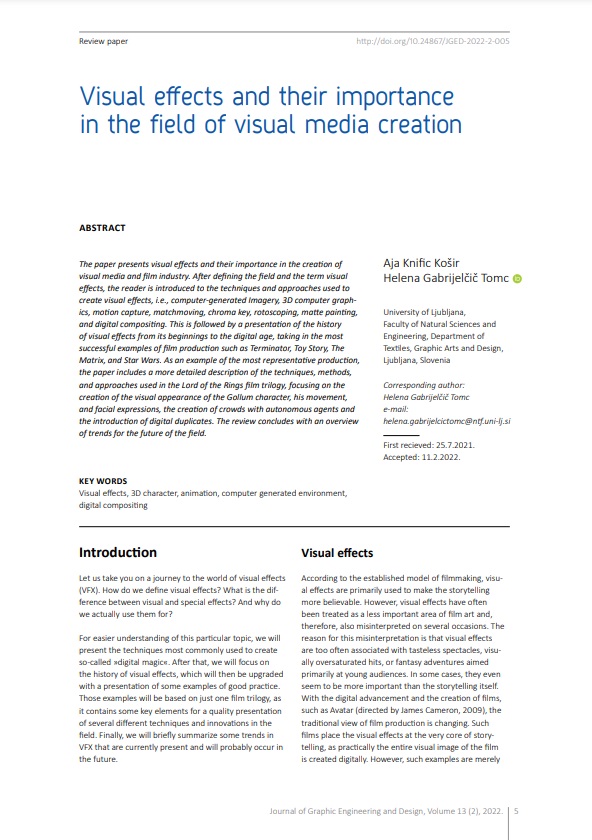
Published 2022-06-01
abstract views: 1603 // Full text article (PDF): 1612
Keywords
- Visual effects,
- 3D character,
- animation,
- computer generated environment,
- digital compositing
How to Cite
Copyright (c) 2022 © 2022 Authors. Published by the University of Novi Sad, Faculty of Technical Sciences, Department of Graphic Engineering and Design. This article is an open access article distributed under the terms and conditions of the Creative Commons Attribution license 3.0 Serbia.

This work is licensed under a Creative Commons Attribution 3.0 Unported License.
Abstract
The paper presents visual effects and their importance in the creation of visual media and film industry. After defining the field and the term visual effects, the reader is introduced to the techniques and approaches used to create visual effects, i.e., computer-generated Imagery, 3D computer graphics, motion capture, matchmoving, chroma key, rotoscoping, matte painting, and digital compositing. This is followed by a presentation of the history of visual effects from its beginnings to the digital age, taking in the most successful examples of film production such as Terminator, Toy Story, The Matrix, and Star Wars. As an example of the most representative production, the paper includes a more detailed description of the techniques, methods, and approaches used in the Lord of the Rings film trilogy, focusing on the creation of the visual appearance of the Gollum character, his movement, and facial expressions, the creation of crowds with autonomous agents and the introduction of digital duplicates. The review concludes with an overview of trends for the future of the field.
Article history: Received (July 25, 2021); Revised (February 4, 2022); Accepted (February 11, 2022); Published online (June 1, 2022)


